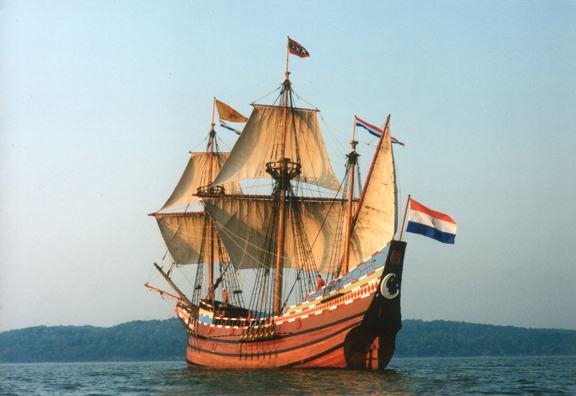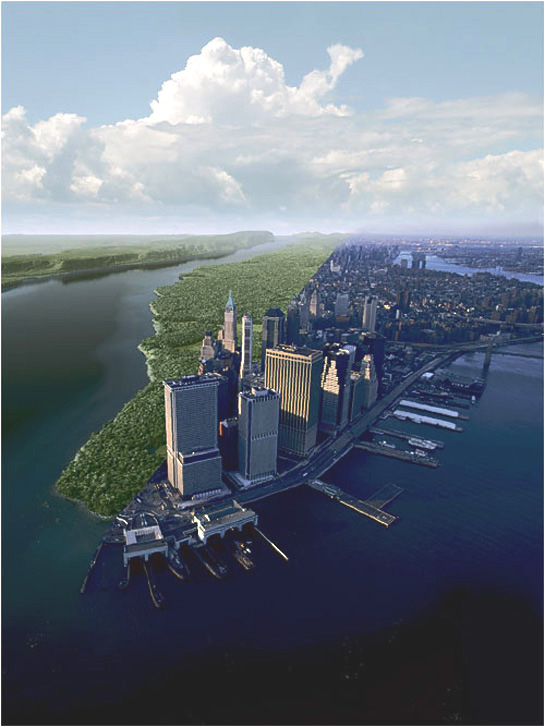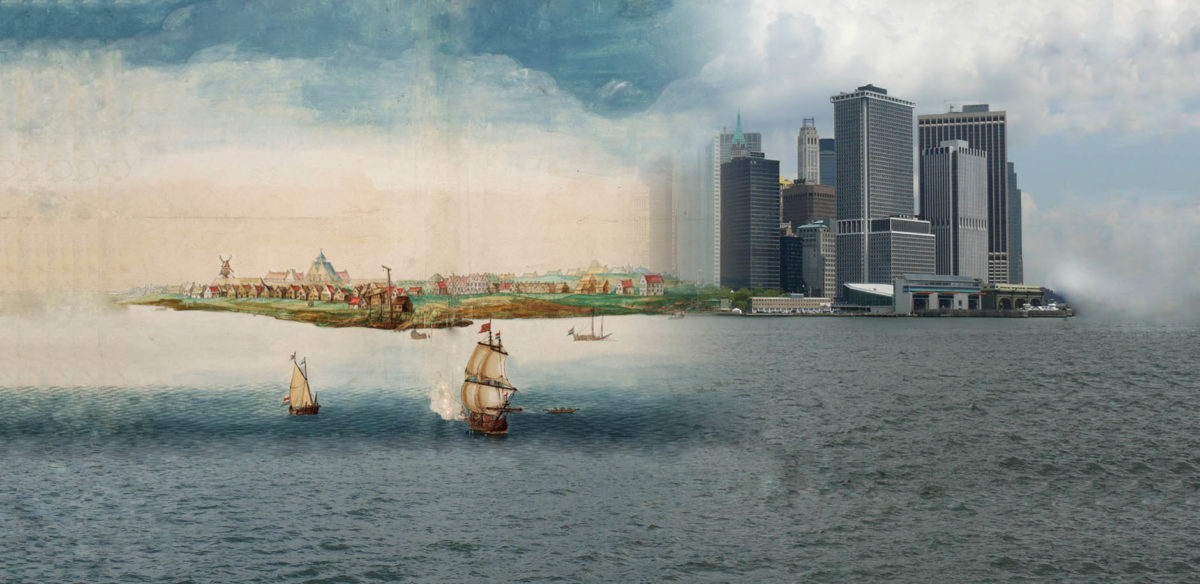Deze hele week staat in het teken van de 400-jarige relatie tussen Nederland en New York. In september 2009 gaat het in en rondom New York om één man: Henry Hudson. Met tal van activiteiten herdenken de Amerikanen (en Nederlanders) dat 400 jaar geleden deze Engelse zeevaarder als eerste Europeaan de baai van New York binnenvoer en hiervan verslag uitbracht. Omdat Hudson onder Nederlandse vlag voer kan Nederland dit feest toevoegen aan de lijst van recente jubilea, waarvoor onze zeevarende voorouders verantwoordelijk zijn.
 Zijn wij Nederlanders misschien iets teveel onszelf op de borst aan het kloppen? Dat New York zo’n fantastische stad is omdat wij er destijds iets mee vandoen hebben gehad? Dat klinkt niet echt logisch. Toch is de gedachte van een New Amsterdam een intrigerende.
Zijn wij Nederlanders misschien iets teveel onszelf op de borst aan het kloppen? Dat New York zo’n fantastische stad is omdat wij er destijds iets mee vandoen hebben gehad? Dat klinkt niet echt logisch. Toch is de gedachte van een New Amsterdam een intrigerende.
Maar nog interessanter wordt het als je je indenkt hoe New York er destijds uitzag. In niets leek het op het huidige New York, laat staat het oude Amsterdam. Maar hoe zag New York er destijds dan uit? Wat zag Henry Hudson precies toen hij de baai naderde? Dat is precies wat het “Mannahatta Project” ons wil vertellen; een fantastisch onderzoeksproject dat samen met “The Wildlife Conversation Society” de oorspronkelijke staat van Manhattan heeft weten te visualiseren:
That’s right, the center of one of the world’s largest and most built-up cities was once a natural landscape of hills, valleys, forests, fields, freshwater wetlands, salt marshes, beaches, springs, ponds and streams, supporting a rich and abundant community of wildlife and sustaining people for perhaps 5000 years before Europeans arrived on the scene in 1609.
It turns out that the concrete jungle of New York City was once a vast deciduous forest, home to bears, wolves, songbirds, and salamanders, with clear, clean waters jumping with fish. In fact, with over 55 different ecological communities, Mannahatta’s biodiversity per acre rivaled that of national parks like Yellowstone, Yosemite and the Great Smoky Mountains!

Today Manhattan is still habitat, but now that habitat is mainly given over to people. Understanding the ecology of Mannahatta helps us bring into focus the ecology of Manhattan today and plan for the urban ecosystem of the future, while at the same time enabling us to reflect upon the value of the wild “Mannahattas” that still exist in the world.
